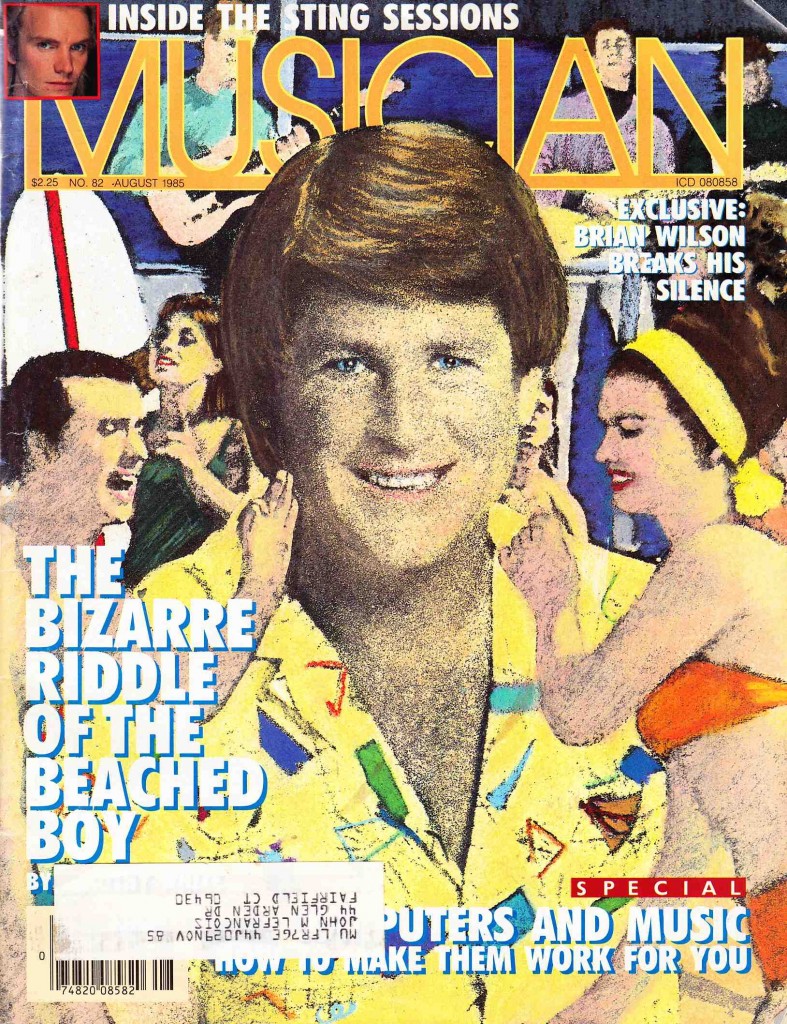 What if I told you that there was a music magazine which featured writers including rock-lit luminaries Lester Bangs and Cameron Crowe; exceptionally strong graphic design; and coverage of the most successful mainstream and most vital ‘underground’ artists of the day; all aimed not at music fans, but at musicians themselves. This publication was called, plainly, MUSICIAN, and it’s worth a look. From Wikipedia:
What if I told you that there was a music magazine which featured writers including rock-lit luminaries Lester Bangs and Cameron Crowe; exceptionally strong graphic design; and coverage of the most successful mainstream and most vital ‘underground’ artists of the day; all aimed not at music fans, but at musicians themselves. This publication was called, plainly, MUSICIAN, and it’s worth a look. From Wikipedia:
“Musician …was a monthly magazine that covered news and information about American popular music. Initially called “Music America”, it was founded in 1976 by Sam Holdsworth and Gordon Baird. (…) Subtitled “The Art, Business and Technology of Making Music,” it became known for its extended and thorough articles about the stars of rock music. “Musician” was not intended to be a fan magazine—the founders envisioned it as a publication about the musician’s craft, and as a result, it earned it the respect of people in the music business. As Holdsworth told an interviewer in 2003, the magazine “…created a level of trust that made the musicians feel they were talking with peers.” In that same article, he noted that “Musician” was also known for finding out the little things that the average magazine did not—such as why a musician chose a particular brand of instrument, or what was the inspiration for a certain song.”
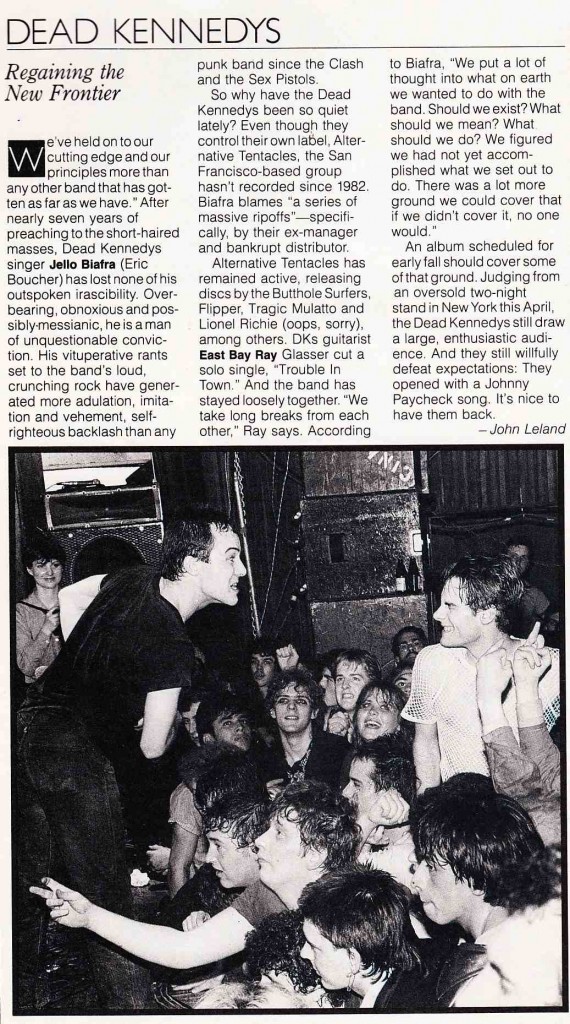 The Dead Kennedys in MUSICIAN, August 1985
The Dead Kennedys in MUSICIAN, August 1985
I have always been struck by how much more candid musicians are when speaking to musician-oriented publications rather than the popular or music-fan press. Old issues of Guitar Player magazine come to mind in this regard. MUSICIAN mag offers much of the same. The intended audience here is musicians, specifically; not recording engineers; but there is still some interesting historical bits for audio fans. If you chance upon a pile of old issues, pick em up. Some revealing advertising from the August 1985 issue:
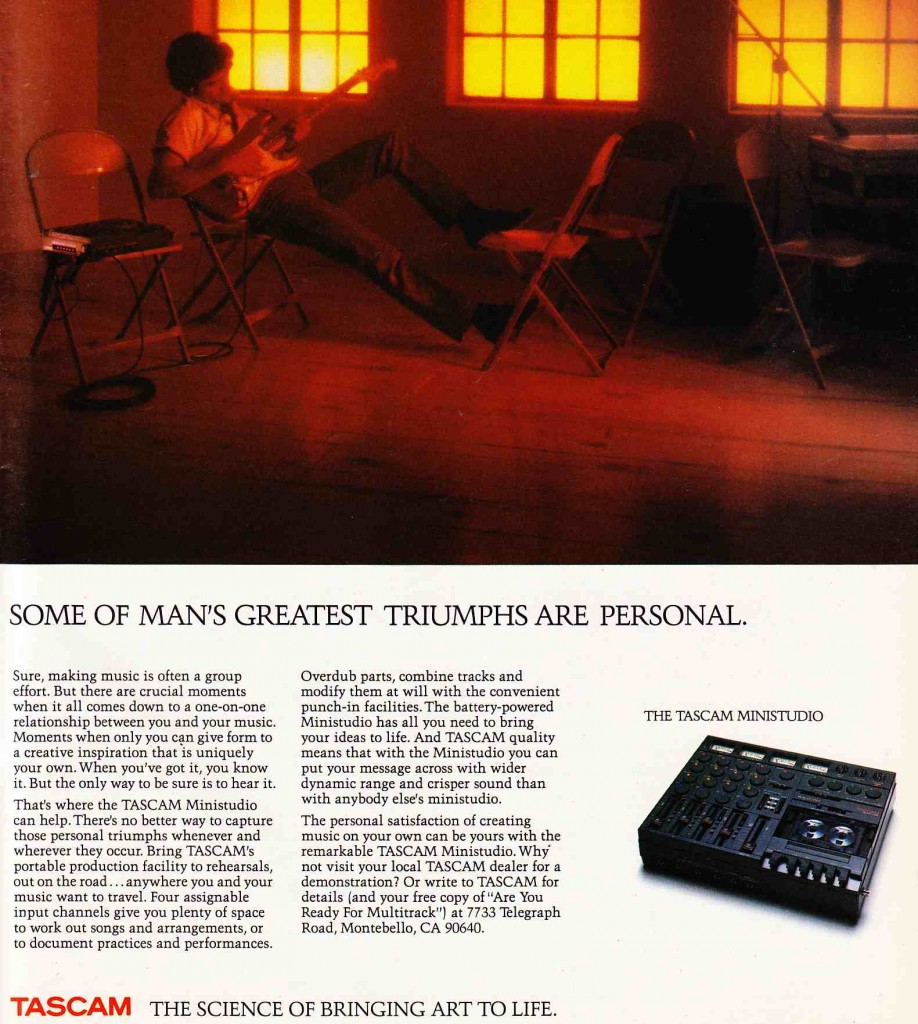 The Tascam Porta 01, which was a lower-priced alternative to their 144/244/246 cassette four-track. Note the light of God/Genius/Art streaming through the windows.
The Tascam Porta 01, which was a lower-priced alternative to their 144/244/246 cassette four-track. Note the light of God/Genius/Art streaming through the windows.
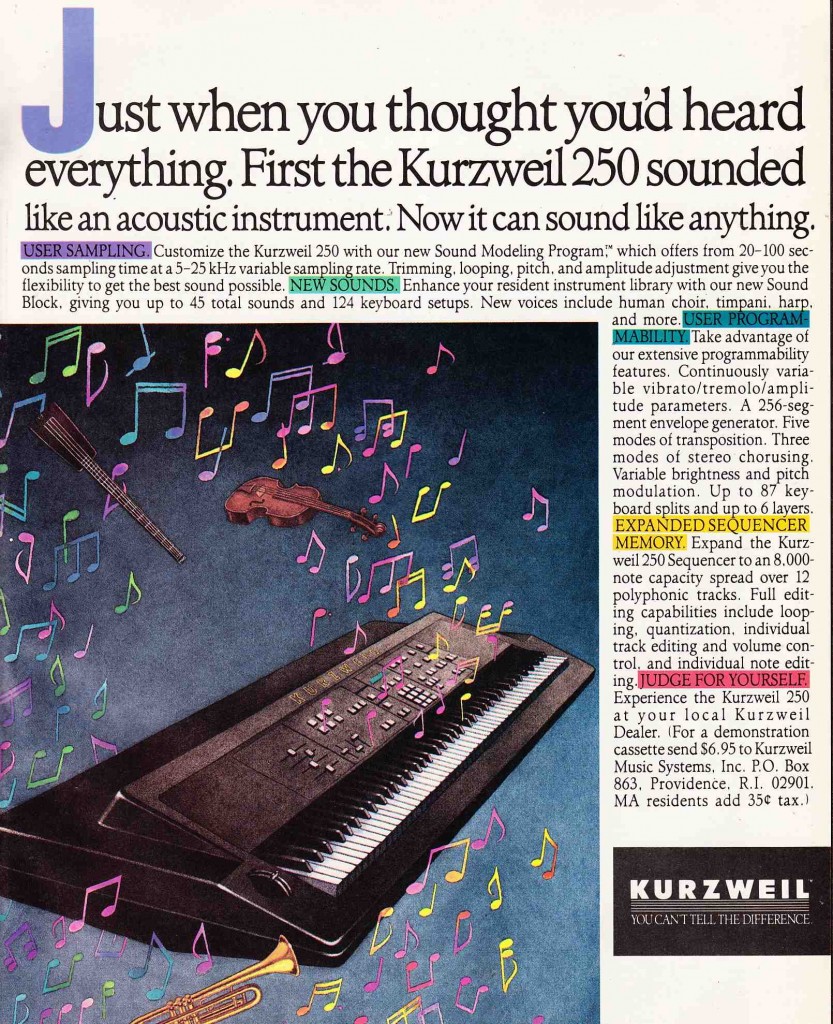 I studied composition at university, and we were taught on the Kurzwel K2500, which was a very high-end synth/sampler in 1995 (approx. $5000 loaded). This is spare change in comparison to the Kurzweil 250 of 1985 (pictured above), which sold for$14,000 – $16,000. That’s THIRTY ONE THOUSAND DOLLARS in today’s money. Good lord.
I studied composition at university, and we were taught on the Kurzwel K2500, which was a very high-end synth/sampler in 1995 (approx. $5000 loaded). This is spare change in comparison to the Kurzweil 250 of 1985 (pictured above), which sold for$14,000 – $16,000. That’s THIRTY ONE THOUSAND DOLLARS in today’s money. Good lord.
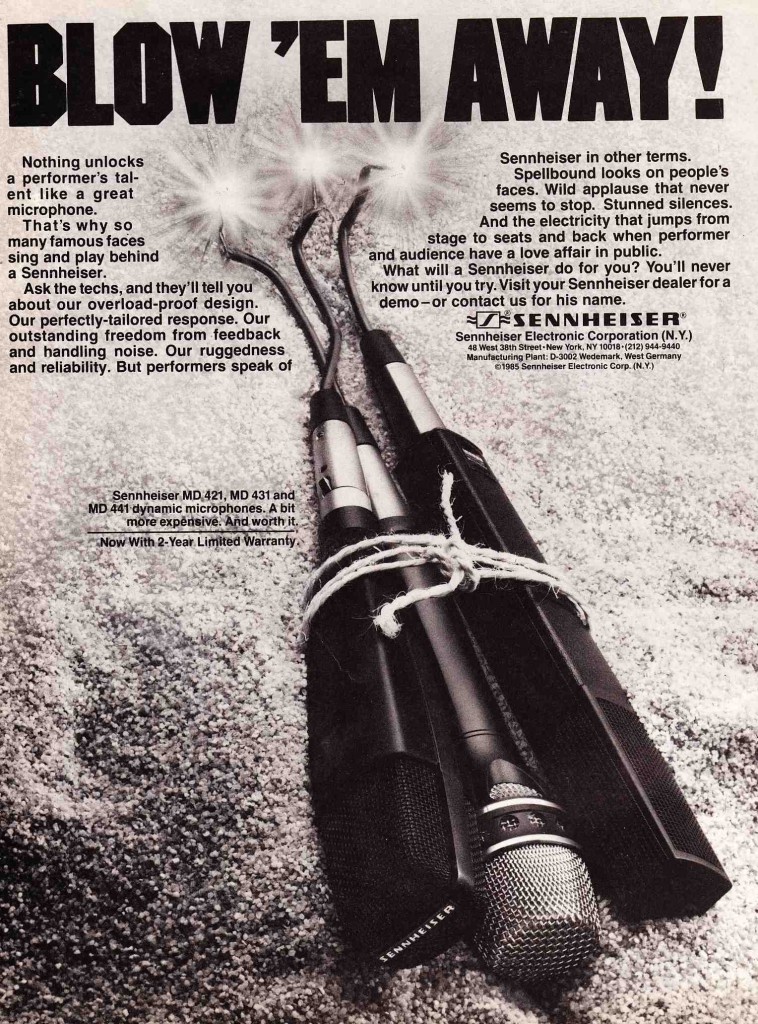 We’ve looked at a lot of 1960s and 1970s Sennhesier 421 ads on this site; here is an 80’s iteration, complete with the ‘blackfire’ 441 of the era.
We’ve looked at a lot of 1960s and 1970s Sennhesier 421 ads on this site; here is an 80’s iteration, complete with the ‘blackfire’ 441 of the era.
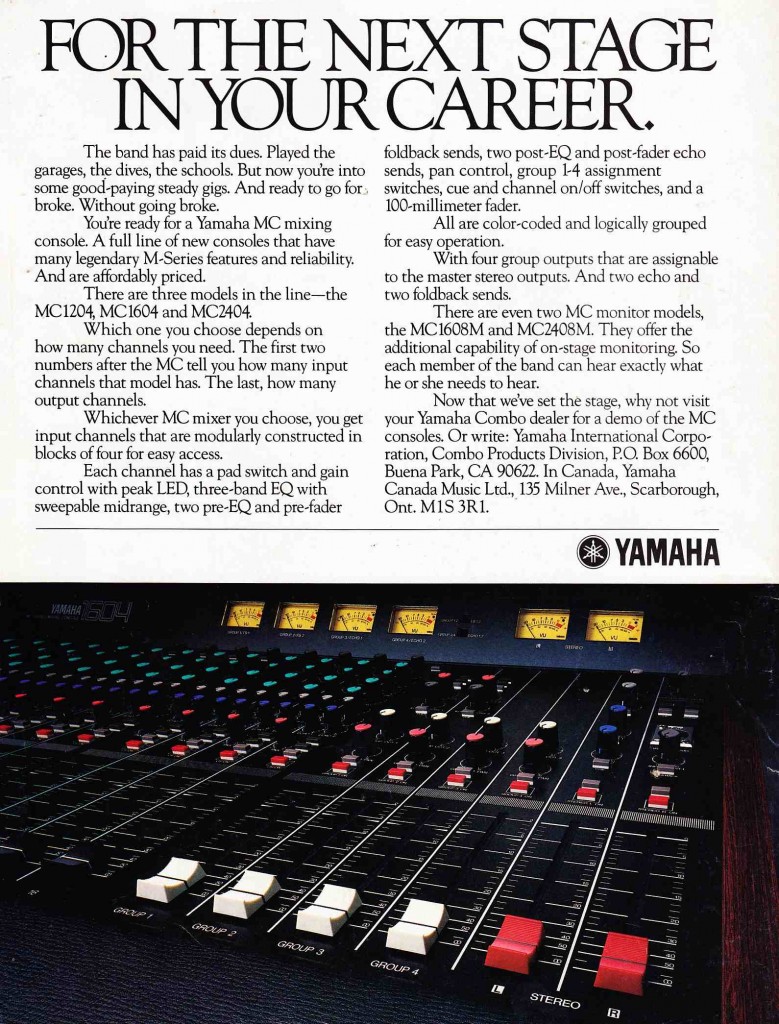 There is a lot of emphasis in the advertising on ‘professional,’ ‘career,’ ‘making it happen,’ etc. Not sure if we can read this as an appearance of the unavoidable-in-the-1980’s ‘yuppie’ zeitgeist but it certainly stands out today as odd language to find in a musician (artist) space, which we generally populate with romantic ‘creative’ and ‘expressive’ concepts.
There is a lot of emphasis in the advertising on ‘professional,’ ‘career,’ ‘making it happen,’ etc. Not sure if we can read this as an appearance of the unavoidable-in-the-1980’s ‘yuppie’ zeitgeist but it certainly stands out today as odd language to find in a musician (artist) space, which we generally populate with romantic ‘creative’ and ‘expressive’ concepts.